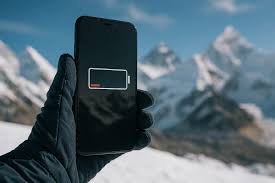The EBC trek is an epic adventure that removes you from civilization and into one of the most striking, remote places on earth. For a lot of trekkers, it’s an important component of the experience — documenting a journey in photographs on your camera, your phone, and your GoPro and checking in back home through social media or for some quick texts. But there are personal-power options, too –especially in the higher-altitude teahouses where power sources can be few and expensive. Knowing what not to waste your power and a good charging sequence is one of the preparations for the Everest Base Camp Tour, so you have a successful, stressless Everest Base Camp Tour. Now, with this guide, you can equip yourself with the power that lets you access every anguishing photo opportunity of your journey.
Making Sense of Power: It Is (The Trail)
The Khumbu region is electricity-poor. In the valleys, some additional power is generated by local (but massive) hydropower stations, but as you climb higher up there in elevation, all those little tea houses make do with primarily solar energy. This means that:
The Higher You Go, the More it Costs: The fee you will pay to charge your devices increases with elevation. This may cost you a few dollars per device once you stop in Lukla or Namche Bazaar. It can be much more expensive at Lobuche or Gorak Shep. Some teahouses offer an hourly rate for internet use, and others have a flat rate per device. Safety: Common rooms in the teahouses are usually not equipped with much battery access, and you might need to take turns with other charging phones and wait for them to be fully charged. The outlets can get crowded on a busy night. Erratic Power Supply: Solar-powered systems are sensitive to weather. A couple of overcast days could easily equate to no power to charge your electronic devices.
The cost of the Everest Base Camp Trek could be charged for facilities in a well-planned itinerary by a travel agency, but some of them may request an extra sky-high amount.
What You’ll Need: Your Charging Method
The best way to handle the power situation is to bring along your own independent charging solutions. This offers you peace and control.
The Power Bank:
This is your most vital tool. You’ll also need a power bank that’s high-capacity, so you can keep your phone or camera charged. If you’ll be out and about for a couple of days, get a charger with a capacity of 10,000mAh or higher to top up your phone; go even bigger (20,000mAh or more) if you’re pounding juice into multiple devices and want them to keep on trucking. Remember to get it warm-friendly too, since you are “going” to employ the power bank on those freezing days, where its performance can drastically drop. And it can be kept in a jacket pocket during the day and tossed into a sleeping bag at night.
The Solar Charger.
Not all of these are going to be practical in the sense that you might not always use them, but while on your hike, something like a compact solar charger to clip onto your backpack and charge gadgets with is kind of amazing to have. But do temper your expectations. They can also be charged and don’t produce a steady stream of power. They’re best used for topping up your power bank/phone whilst out and about in the sun. Extra Batteries: Having tipped around away with your DSLR or GoPro, extra batteries are an absolute necessity! This allows you to plug in multiple devices without much space between them, and it can be the difference between getting murdered because you took up too many outlets.
Smart Power Management: The Art of Conservation
Best charging equipment and another rule for the smart trekker is to conserve and ration. Anything you save in power is a charge you don’t have to pay.
Airplane Mode: Your phone drains battery in the mountains due to its incessant search for a signal. Put your phone on airplane mode, unless you’re using it to take photos or videos. This is something that will significantly prolong its battery life. Shut down background apps. Close anything that you don’t actually need to have running. They may be silently consuming your battery. Dim Your Screen: The Screen is one of the largest power consumers on your phone. Turn your screen brightness down as low as you’re comfortable with. Stove Devices: Warm the devices. Yes, it’s an obvious preparation, but it works really well. Slip your phone and the power bank into an inside jacket pocket during the day, then into your sleeping bag at night. That’s why the batteries don’t get an early cold whammy.
You need to be resourceful on the Everest base camp trek, and a control freak over your electricity sources is what you have to be.
Final Thoughts: Disconnect to Reconnect
But if you’ll be capturing on your journey digitally, a solid charging strategy is essential; the real Everest trip, though, doesn’t have anything to do with tech at all — it’s about getting off the grid and into the moment. There will be times when you lose power, the Wi-Fi fails, and all you can do is occupy space. Embrace these moments. Put the phone away, sit around the fire at the teahouse with other trekkers, and share some stories. It is true that at times in our lives we do not cram into a photo without a camera, but feel in our heart, and making an EBC Trek will make you redefine yourself. It is a convenience to maintain one’s power, but disconnection can also be something of a blessing.







